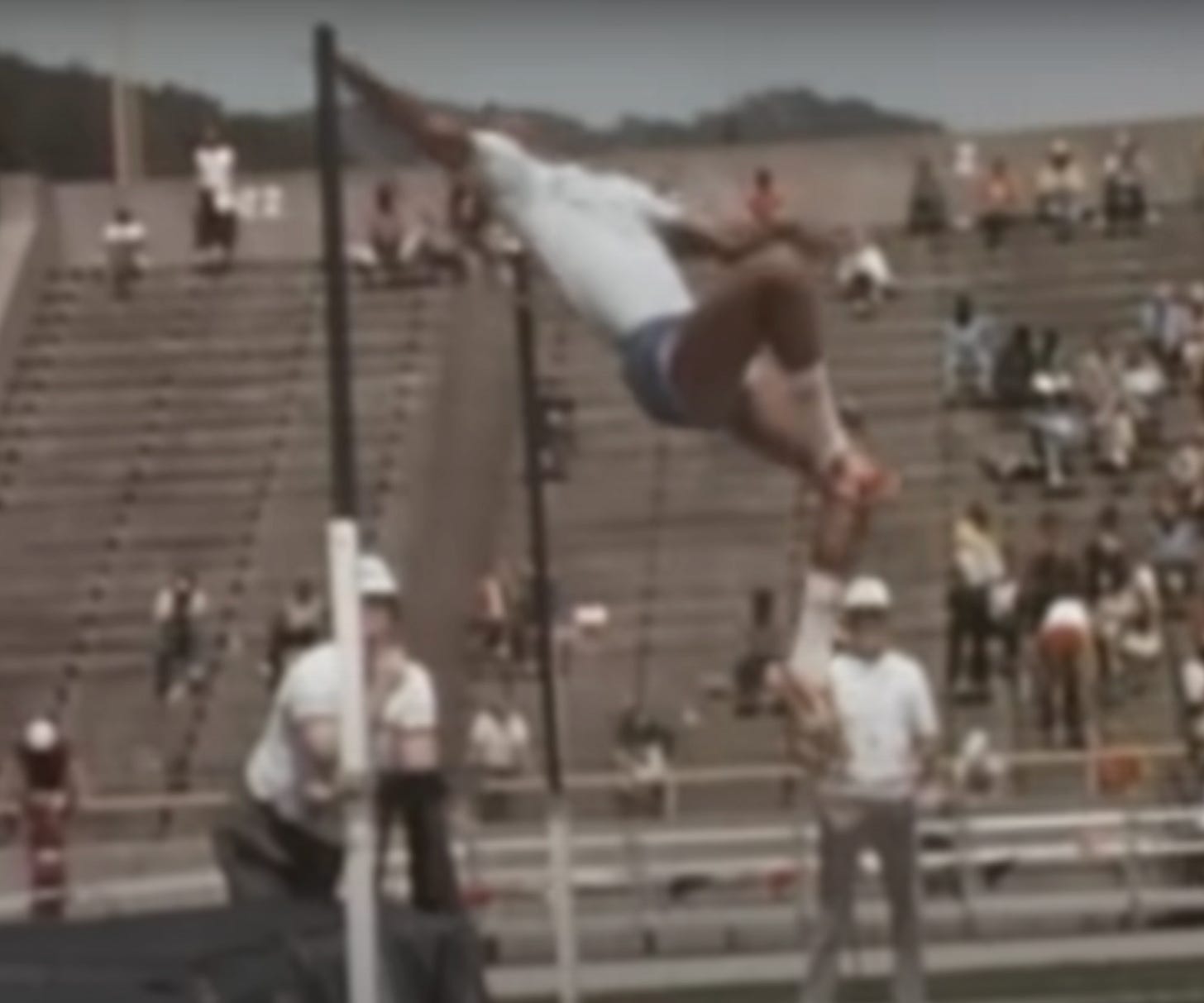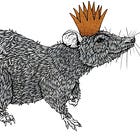9. Appropriate Eccentric Action Pt. 2:
I Missed the Mark and Hit the Truth Road

Continued from:
From the beginning
Svadhyaya and Eating the Hermit Kookie
To be honest I didn’t actually hear the phrase ‘Appropriate Eccentric Action’, or something like it until 2022, after Yoshiko and I began to listen to Michael Stone’s yogic-Gautama Buddha podcasts. (I’m not sure if Stone actually used that exact phrase. You can listen to his recorded talks at his podcast.
And his webpage, Michael Stone Teaching, is also excellent.) Stone comments that Buddhism as a religion will die if it doesn’t make itself relevant to ameliorate the suffering issues of today, hence his book Awake in the World: Teachings from Yoga and Buddhism for Living an Engaged Life.
Writing these essays has helped me more clearly see the truths of my heart. The explorations have expanded my courage to be compassionate with myself and others. This has greatly improved my life. If these essays have given you some of these benefits, I would be honoured if you would support my work by becoming a paid subscriber. Thank you. 🙏
Stone loves the image of becoming, or reconnecting to, our true eccentric selves by jumping that eccentricity into existence with active engaged participation in order to change the world in positive ways. Stone points out that Gautama left the austere and hermitic practices that he had done early in his exploration—and which at one point almost killed him—towards the elimination of suffering. Instead Gautama chose to be engaged with the communities within which he lived. And one of the three treasures of Buddhism is sangha, community. To engage community Gautama made a practice of teaching within a kilometre of the nearest city or town beneath a tree. In his talks Stone frequently exhorts his students to fix the planet and, to a lesser degree, he avers that it is important to fix ourselves first with sincere mindfulness-of-the-body yogic practice in order to calm ourselves enough within our immediate communities to effect positive changes in ways we may not even see.
To what extent had Yoshiko and my having become hermits within our yoga bliss practices since getting together in 2018 been intensified after our move to Whitehorse? Wow, life is fascinating because the plandemic lockdowns, social pressure to disengage from community-life using masking and quarantines had the unplanned effect of deepening our hermit practice. We had had some community interaction while in New Westminster, although that was minimal while I worked.
When we arrived in Whitehorse, instead of being encouraged to join and meet people, we were told to not meet people and to isolate. We both blissfully embraced that, as I explored in my essay
We had become a kind of hermit to the extent that our engagement was focused on kundalini yoga and self-study through the advanced or subtle yogic breath and mantra practices that we were eagerly learning either from books or on-line. And that was an important and powerful form of inward looking yoga because we had fully engaged svadhyaya, self study using scriptures and yogic meditation and with that had disengaged from the community.
We were engaged and disengaged at the same time.
Is that an example of Appropriate Eccentric Action? Very likely because
However, to Stone’s point, it wasn’t fixing the problems of society that appears to have gone into a kind of mass formation/psychosis about viruses, climate, and the appropriateness of exacerbating children’s sexual confusion in order to sterilise and mutilate them.
Jump Shift: We Disengage to Engage by Leaping into Action: Emails, Placards, Messages

With purpose and zeal, Yoshiko and I grasped the reigns of action. It was exciting and filled with the delusion of heroically saving Canada and Japan. I sent emails to all of the Canadian political representatives, federal and provincial. Yoshiko and I sent messages to our social media friends and acquaintances. Yoshiko and I walked the snowy front street and waved placards in -15 to -30°C temperatures with the courageous others.
Most of us were surprised at the level of anger being expressed towards us from some of the occupants who waved their closed fists and blared their horns, hot inside their warm cars.

It turned out that we had gone from highly engaged eccentric svadhyaya hermits into inappropriately engaged eccentric ‘social’ activists: at the time I certainly didn’t know that clear intelligent forceful emails and requests for conversation and/or action are are examples of inappropriate eccentric action. We didn’t see that, to those people living the psychological terror and horror that the plandemic had successfully instilled in them using the media and fake ‘science’ in once respected journals of medicine, we had become dangerous and threatening anti-science conspiracy wackos to be locked up and/or killed.
I had had my doubts about the effectiveness of placard prancing protesting on the street. We went to them to bring our support to the group of people looking to reverse the tyrannical policies that had been engaged. To the best of my knowledge, such behaviours or approaches have not worked except in very very rare exceptions for issues of far less importance than what had begun to look like an iatricide/genocide. And so I saw no benefit beyond the support of numbers in the group and, perhaps, our energy.
And with a brilliant appropriateness the cold slap in the face we had got from our covid polity, ie our ’friends’ and government representatives, woke us up. We had engaged using a subversive form of himsa, (the opposite of Ahimssa), violence in thought and intentions. We had engaged in a kind of moralistic arrogance and violence. In other words we had fallen prey to one of Mara’s favourite soldiers of delusion: good intentioned ‘good-for-you’-itis that, with the best of Mara’s best delusions, is massive and is, always, the other person’s problem.
And Yet, And Yet
What about protesting with placards, cold toes, nose and fingers, the very form of engagement I had dismissed as ineffective and delusional? Well, with great great humour, the Universe (or whatever name we give the energy that with loving laughter is guiding understanding through eccentric experience), turned out to be the Appropriate Eccentric Behaviour. Although, not as the means by which the tyrannical movement was stopped. For that I give gratitude and admiration to the Canadian truckers who embodied powerful peaceful protest so well that the government’s manufactured violence backfired and further empowered the truckers as a world wide statement of the peaceful expression of truth and its ability to stop delusion by shining a light on the lies and liars.
While our small acts of actual protest did nothing obvious, our actual presence did everything: we connected to community, an actual sangha resting in truth. A wonderful example of Stone’s description of the unknown effects of being calm within ourselves. From that our covid svadhyaya expanded, we had become engaged in a covid sangha and with delightful unexpected, unplanned eccentricity had ceased being svadhyaya hermits.

And, with further humour, with that engagement later we would find the support to more fully engage by disengaging from Canada and leaping into the freedom of the unknown and unknowable trust-fall into the Universe.
RotFL! More Zen Kyūdō? Really?
And now, although you cannot see it, I am rolling on the floor laughing because these are exquisite examples of the ‘hitting the target talk’ in the book Zen in the Art of Archery:
‘The right art’, cried the Master, ‘is purposeless, aimless! The more obstinately you try to learn how to shoot the arrow for the sake of hitting the goal, the less you will succeed in the one and the further the other will recede. What stands in your way is that you have a much too wilful will. You think that what you do not do yourself does not happen’ (p46-7).
We had had the clear aim with ‘hitting the mark’, ie, politicians and friends. We had no clear purpose to protest, and we received from that target-less target what allowed us to expand into our Appropriate Eccentric Action,’ the ‘true’ bullseye of our lives being the spiritual expression and expansion into engaged freedom.

A Nice Synchronicity
As I began this exploration I went to Stone’s webpage to find something he wrote about “Appropriate Eccentric Action”. I began by looking for the lovely word ‘eccentric’. I found the word, not the phrase, and not in the way I was looking for! And that makes me laugh because when I came to write this I had created the requirement to hit the bull’s eye. And now that I have all but finished writing this the eye of the bull I was aiming for has dissolved into the fragrance of incense. I find myself in the space of sipping matcha in a Mexican garden surrounded by greenery and beautiful violet bougainvillea and other plants.
I sat with the purpose of hitting the mark, and with that missed it to discover the true mark.
Necessary Disaster from Michael Stone
I would like to offer this science fiction hypothesis – that the death of the Buddha is a necessary disaster. Perhaps disaster is the wrong word, perhaps we could use the word obstacle. The Buddha of course never wrote a book, like Jesus, like Muhammad, or Helen of Troy or Socrates. But the Buddha was a kind of talking book, or at least there were decades of his practice, his ministry, his teachings. He spoke often and at great length. But he never spoke, like, “The Lotus Sutra.”
Or did he? (It was written in 100 or 200 CE, hundreds of years after his death.) There’s some sense in which it’s necessary for him to die, for these texts and traditions to hit, to meet this other culture, and on the other side, for the Chinese people living in this culture to have the imagination, the internal necessity derived from the conditions of their own lives, to remap these received writings. These writings somehow turn the necessary obstacle of the Buddha’s death into something strangely unexpected, and opening and beautiful.
When I think about necessary obstacles, the necessary obstacle of the Buddha’s death, it makes me think about a conversation I wasn’t part of at the Shambhala Centre up on Bloor Street. They have a kind of waiting room there, it’s not really a room it’s more like a hallway with a couple of benches. It’s really great. I hear “Hi? I can’t believe you’re here.” And I look up at someone’s impossibly young version of a face and it’s aimed at this couple who are sitting beside me, who raise their heads as if they were the same person, as if they were moving in a Busby Berkeley musical, perfectly in sync. They look like they’ve been eating leftovers, leftover bad feelings for the whole of their young lives, but suddenly their friend is there so they both put a face over their face, they try to make themselves into what my mother would call ‘presentable.’ “Hi.” “What are you guys doing here?” She’s just taken a peek into the sitting room and I can see her wondering, what are all those pillows doing on the floor? And what are you guys doing here, anyway? And then this 23-year-old girl sitting beside me, 23 going on 123, says in this world-weary voice, “Why does anyone come to a place like this? Nothing else seems to work.”

From Zen in the Art of Archery:
That the way of the ‘artless art’ is not easy to follow we were to learn during the very first lesson. The Master began by showing us various Japanese bows, explaining that their extraordinary elasticity was due to their peculiar construction and also to the material from which they are generally made, namely bamboo.
…
After this significant introductory act of purification and consecration the Master commanded us to watch him closely. He placed, or ‘nocked’, an arrow on the string, drew the bow so far that I was afraid it would not stand up to the strain of embracing the All, and loosed the arrow. All this looked not only very beautiful, but quite effortless. He then gave us his instructions: 'Now you do the same, but remember that archery is not meant to strengthen the muscles. When drawing the string you [do] not exert the full strength of your body. [L]earn to let only your two hands do the work, while your arm and shoulder muscles remain relaxed, as though they looked on impassively. Only when you can do this will you have fulfilled one of the conditions that make the drawing and the shooting "spiritual”. With these words he gripped my hands and slowly guided them through the phases of the movement which they would have to execute in the future, as if accustoming me to the feel of it (p38-40).
Continued at
From the beginning:
Writing these essays has helped me more clearly see the truths of my heart. The explorations have expanded my courage to be compassionate with myself and others. This has greatly improved my life. If these essays have given you some of these benefits, I would be honoured if you would support my work by becoming a paid subscriber. Thank you. 🙏
Thank you for reading.
Song of the Essay:

“This is My Hand” by My Brightest Diamond
This is my hand This is my wrist This is my arm This is my fist Like a twisted vine wraps around entwining This is my face This is my mouth This is my eye This is my brow Like lilac wine pouring out to thee for thee This is my shape This is my form This is my age This is my frame This is my mind This is my voice This is my heart This is my choice This is my thigh This is my sex This is my hip This is my breast This is my shadow This is my hate This is my line This is my doubt This is my gloom My flame My joy My aim To love To love To love This is my shape This is my form This is my age This is my frame This is my mind This is my voice This is my heart This is my choice This is my time This is my breath This is my right This is my left This is my shadow This is my hate This is my line This is my doubt This is my gloom My flame My joy My aim To love












For some reason I am not receiving notifications when you post. I only noticed this yesterday and have some catching up to do. I started reading this last night way too late and had to close my laptop and go to bed before I could finish. The upside is that you and Yoshiko were in my dreams last night. I only remember that you were there and there was a large (natural) stone wall near the ocean. - bluffs. There were large ants that would come out and then dart back into the little cracks and crevices. This was a blip in a longer sequence, but I know that we were at the ocean in your neck of the woods ;)
‘Good-for-you’-itis is my new favorite.
And "the unknowable trust-fall into the Universe" perhaps the most apt description I've heard....it perfectly describes distinctly poignant decision points in life. The part of the choose your own adventure book when you choose to unlock the mysterious door in the wall instead of continue down the path you walk every day. It's exactly how I felt when I decided to homeschool my children, when Connor was 5; when I packed my three kids up in the night and fled a toxic marriage; when I packed those same three boys up again and moved to an apartment in Atlanta to start entirely over; when we stood firmly rooted in reality and refused to be injected....
Beautiful words, as always.
Thank you.
I have thought long and often about the absurdity (eccentricity) of protesting when we all know the history of such protests at achieving anything material. I enjoyed reading your views on the same, thanks.